49 Posts
"We cannot go back to our apartments," says Syrian aid worker taking shelter in a car
From CNN's Christian Edwards
Dr. Mazen Kewara, Turkey director of the Syrian American Medical Society (SAMS), spoke live on CNN from near the earthquake’s epicenter in Gaziantep, where he and his family were taking shelter in their car.
Kewara said that their car was the safest place for them to be at present.
“We cannot use the buildings anymore. Maybe for hours. Maybe until tomorrow. I don’t know.”
Turkey continues to be struck by aftershocks – some nearly as strong as the initial earthquake – meaning it is not safe to be inside.
“Next to my building, about 200-300 meters, there’s a collapsed building. There are many buildings that have collapsed in Gaziantep,” said Kewara.
SAMS is a medical relief organization, working in Syria and neighboring countries. But their efforts to provide support will be hampered by the damage to buildings.
“We have four of our hospitals damaged severely by the earthquake. We have evacuated two of them,” said Kewara, who is originally from Damascus, Syria.
The ongoing aftershocks will make it “very, very, very challenging for us as a humanitarian organization to be able to respond” to those in need.
For now, Kewara and five others remain sheltered in his car, waiting for the tremors to stop.
More of an "epi-line" than an "epicenter" for Turkish quakes, expert says
From CNN's Christian Edwards
Responding to reports of a 7.5 magnitude aftershock following the first quake in southern Turkey this morning, CNN’s meteorologist and severe weather expert Chad Myers explained why the aftershocks have been so severe.
The 7.5 aftershock was “an earthquake in itself,” Myers told CNN's This Morning. “It would have been the strongest earthquake since 1999 in the region.”
We always talk about the epicenter, but in this case we should talk about the epi-line.
Two massive tectonic plates – the Arabian and the Eurasian – meet underneath Turkey’s southeastern provinces. Along this fault line, “about 100 miles from one side to the other, the earth slipped,” said Myers.
Seismologists refer to this event as a “strike slip” – “where the plates are touching, and all of a sudden they slide sideways,” said Myers.
This is unlike the Ring of Fire, which runs along the west coast of the United States. In this zone, earthquakes and tsunamis are often caused by subduction – where one plate slides below another.
But in a “strike slip,” the plates move horizontally, rather than vertically.
“Why that matters is because the buildings don’t want to go back and forth. And then the secondary waves begin to go back and forth as well,” said Myers.
Because of the nature of this seismic event, aftershocks could last "for weeks and months," according to CNN meteorologist Karen Maginnis.
Netherlands to fly 15 tons of search equipment to Turkey
From CNN's Mick Krever
The Netherlands will fly 15 metric tons (16.5 imperial tons) of search and rescue equipment to Turkey Monday, following the deadly 7.8 magnitude earthquake there.
“It is expected that at the end of the afternoon, a cargo plane with 15 tons of heavy rescue equipment and other supplies will depart for Turkey from Eindhoven,” the Urban Search and Rescue Team said on its website.
The departure time for 65 rescue workers and eight search dogs is still unknown, the organization said.
Dutch Foreign Minister Wopke Hoekstra said earlier that the search and rescue team will include "police and military personnel, first aid responders, and firefighters."
“Shocked by the news of the devastating earthquake in Türkiye and Syria. Our thoughts are with the victims, their families, and the many injured Turks and Syrians," Hoekstra added.
In photos: Earthquake leaves at least 1,500 dead in Turkey and Syria
A powerful earthquake rocked Turkey early Monday, killing more than 1,500 people and injuring thousands more across the country and neighboring Syria.
Photos showing the true scale of the disaster emerged as the day broke. Entire city blocks were flattened by the quake, metal rods were strewn across the streets and vehicles toppled over. Rescuers are still working to free people trapped under the rubble.
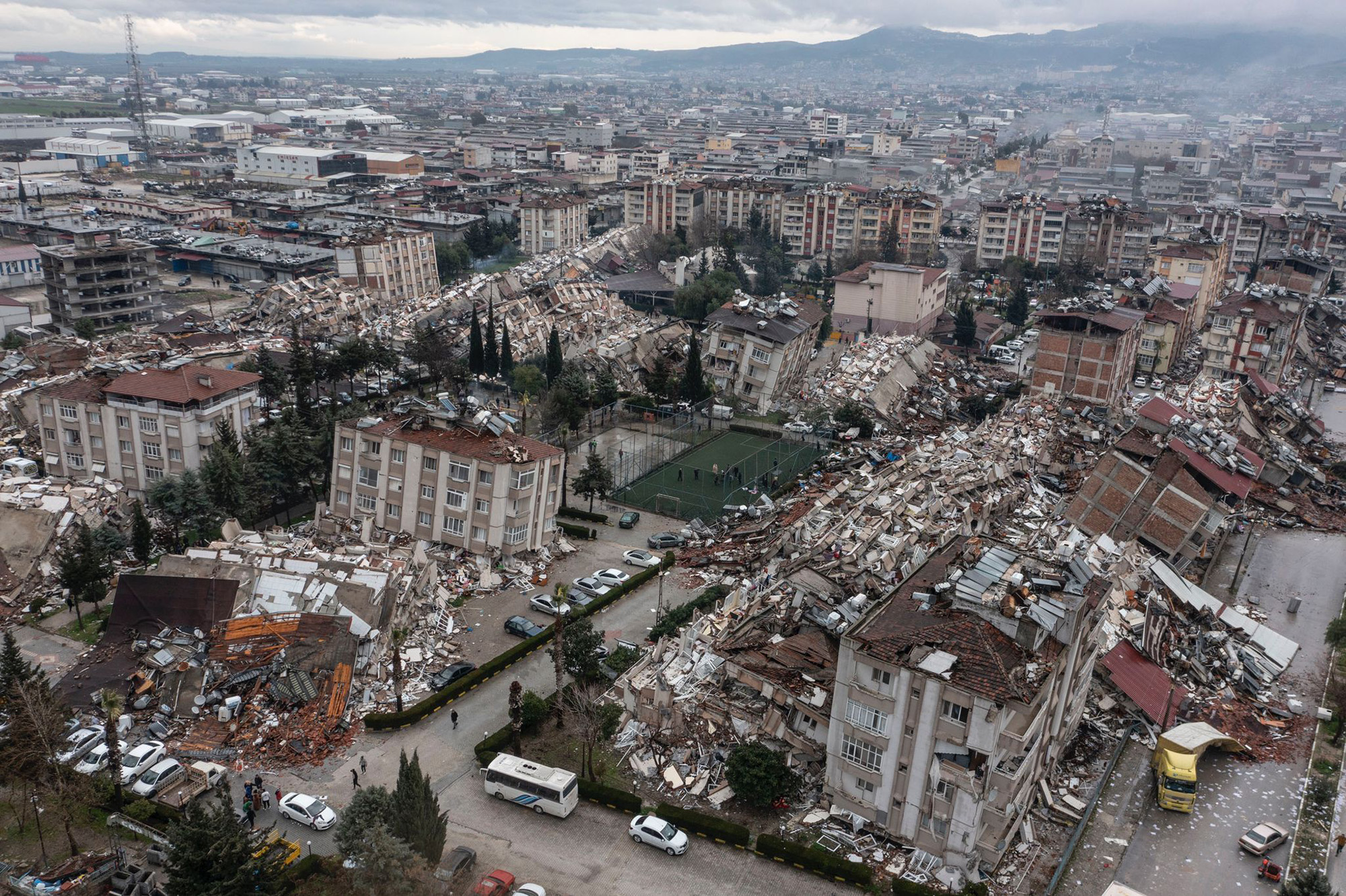
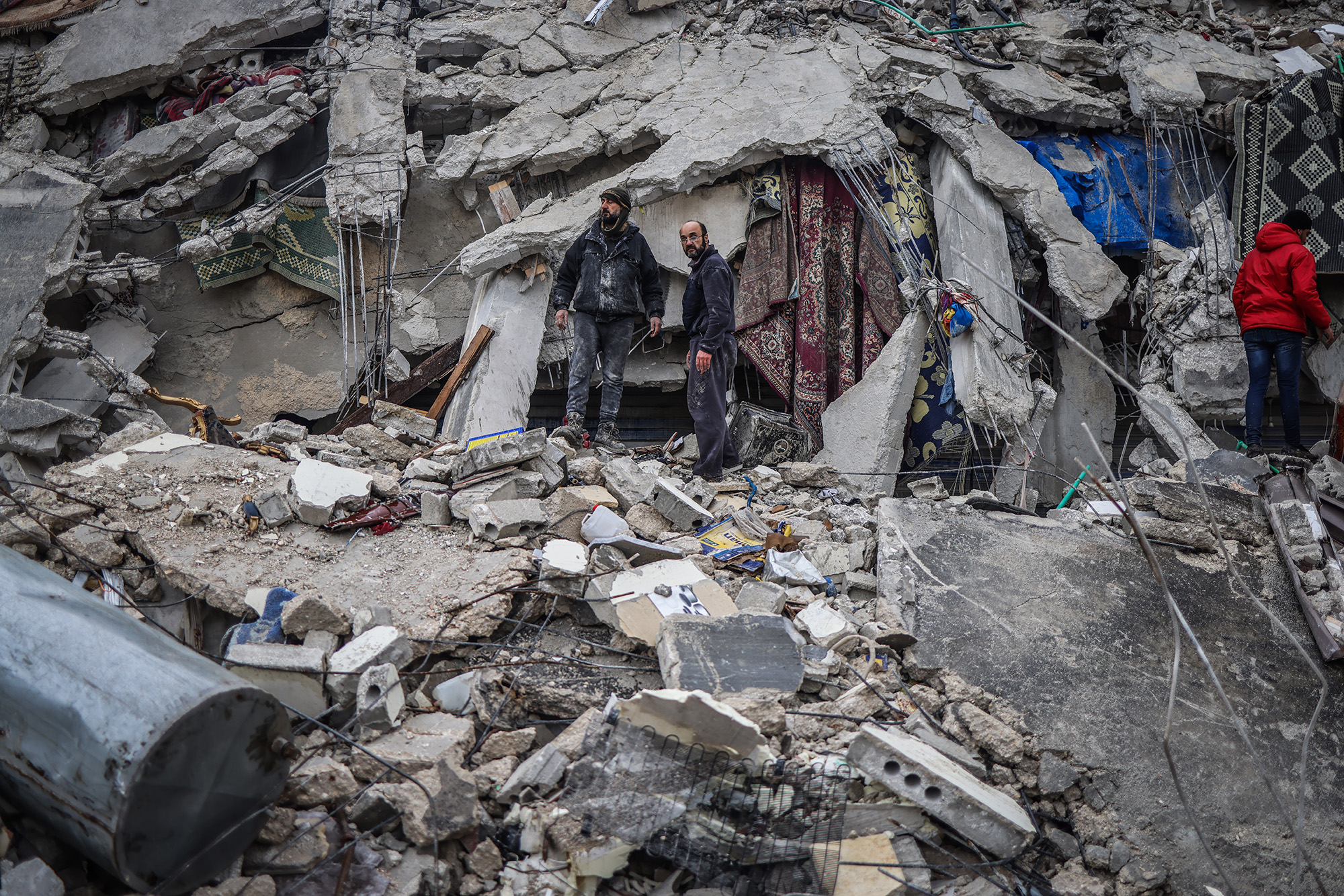
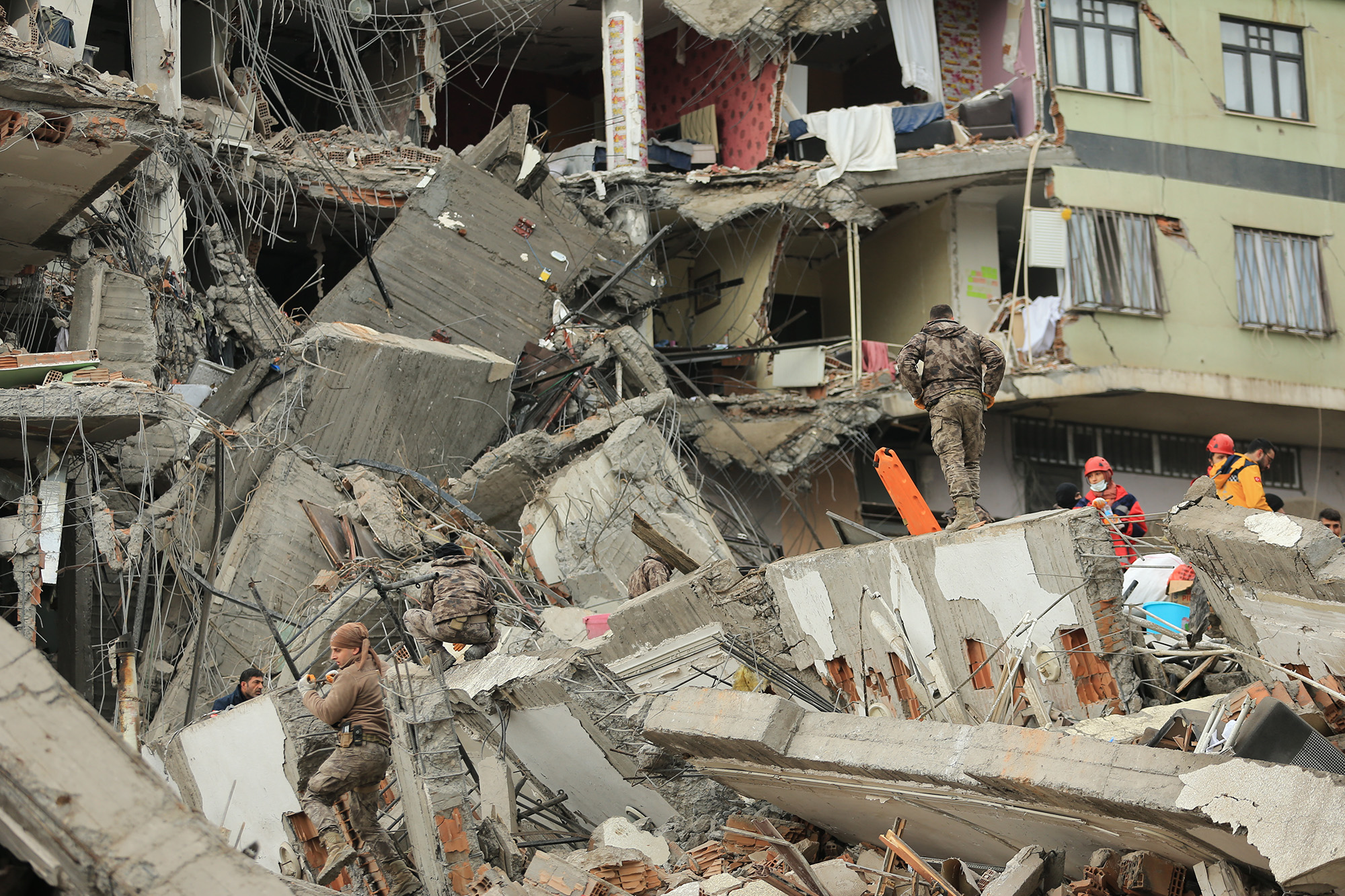
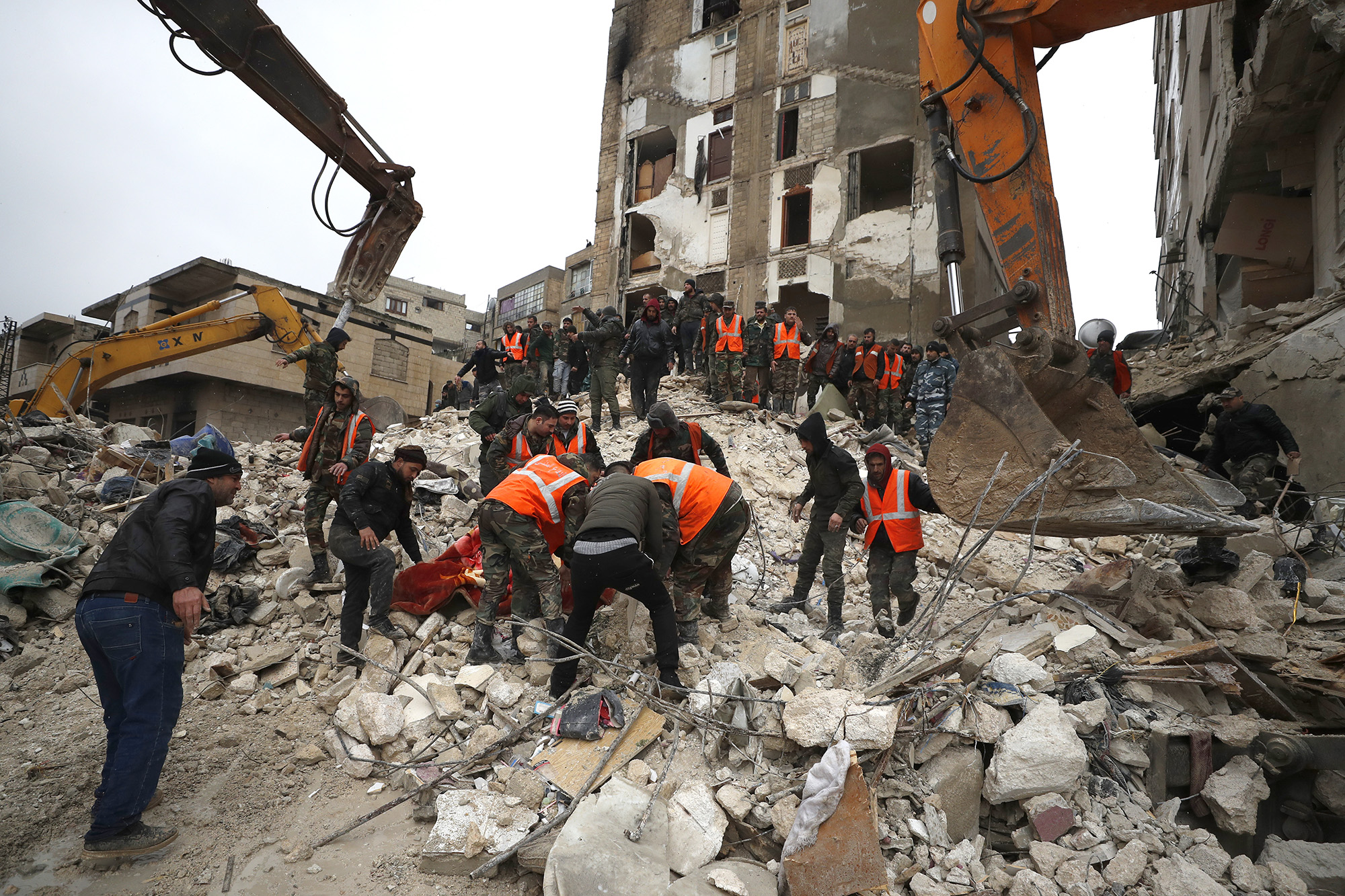
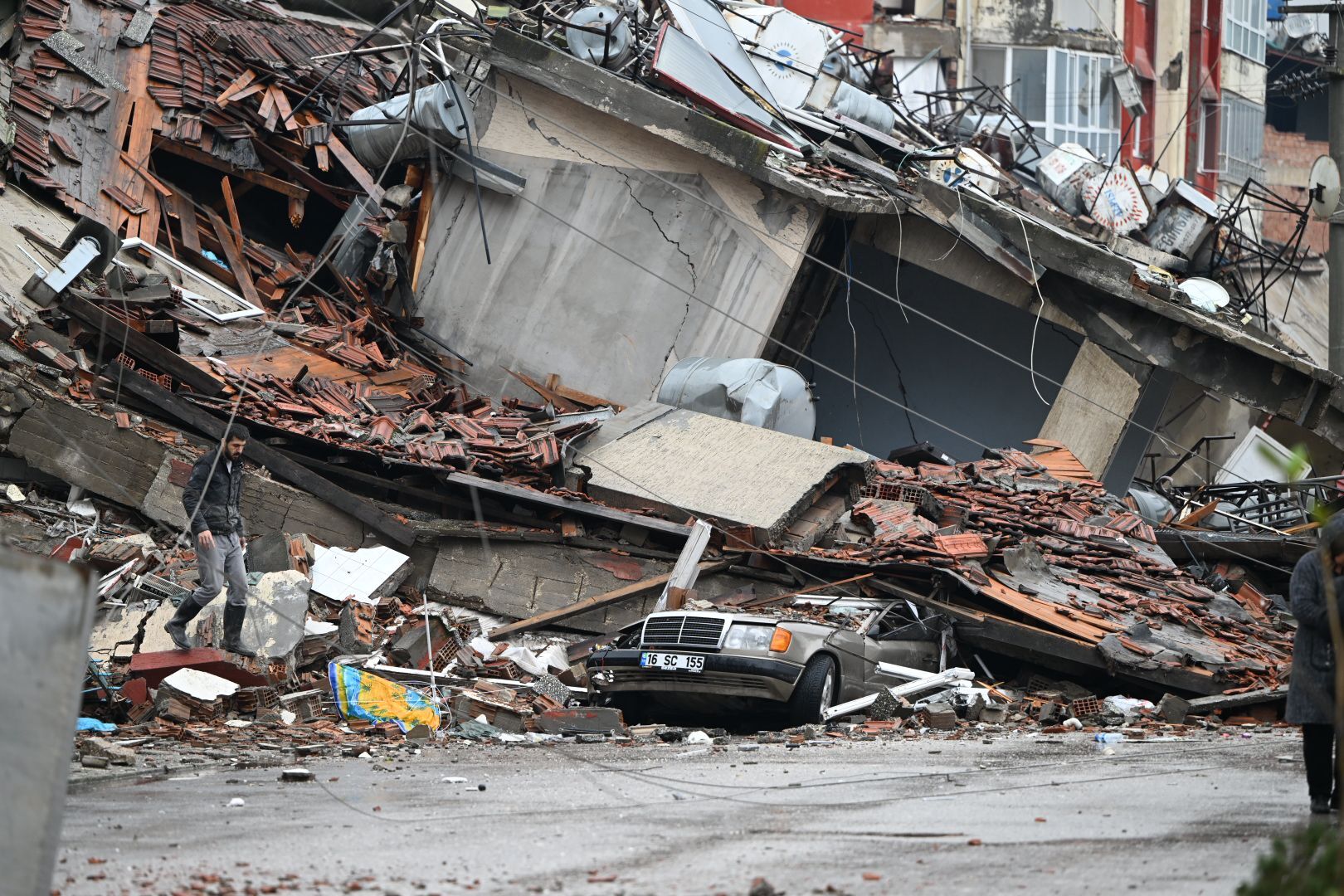
Germany will deliver aid to earthquake region soon
From CNN's Inke Kappeler in Berlin
German technical aid agency THW is preparing to deploy aid to the region affected by Monday's deadly earthquake, which has killed at least 1,500 people and injured thousands more in Turkey and Syria.
THW will deliver tents, blankets and emergency power generators, according to government spokesman Maximilian Kall.
After speaking with Turkish Ambassador to Berlin Ahmet Başar Şen, German Interior Minister Nancy Faeser vowed to send all the help needed, Kall said. Turkey has asked for a European Civil Protection Team to be deployed, he added.
Meanwhile, NATO and the EU have offered to send help following the disaster, according to Turkish President Recep Tayyip Erdoğan.
Combined death toll rises above 1,500 after devastating earthquake
From CNN’s Kareem Damanhoury

At least 1,504 people have been killed in Turkey and Syria, and thousands more injured, after a powerful 7.8 magnitude earthquake rocked southern Turkey early Monday.
In Syria, a total of at least 592 people have died, including 371 mostly in the regions of Aleppo, Hama, Latakia and Tartus, according to Syrian state news agency SANA, which also reported 1,089 injuries.
Meanwhile, the "White Helmets" group, officially known as the Syria Civil Defense, also reported at least 221 deaths and 419 injuries in opposition-controlled areas of northwestern Syria.
“Hundreds remain trapped under rubble,” the White Helmets added on Twitter.
In Turkey, at least 912 people have died and 5,385 people were injured, Turkey's President Recep Tayyip Erdoğan said in a televised address Monday.
Rescuers are working through the rubble of collapsed buildings to locate survivors, while NATO, the EU and 45 countries have offered assistance following the disaster.
Huge 7.5 magnitude aftershock hits Turkey, following deadly earthquake early Monday
From CNN's Brandon Miller
A major aftershock measuring 7.5 in magnitude struck Turkey at 1:24 p.m. local time (5:24 a.m. ET), after a devastating 7.8 magnitude earthquake rocked the region early Monday.
The aftershock is located approximately 95 kilometers (60 miles) north of the original quake that struck a little over nine hours earlier in southern Turkey, according to the United States Geological Survey (USGS).
This is the largest of the more than 30 aftershocks to strike so far. This is a preliminary estimate on the earthquake magnitude and is subject to change.
The 7.5 magnitude earthquake is considered an aftershock of the earlier 7.8 magnitude quake. All aftershocks are individual earthquakes, but as long as they are not stronger that the original, main quake, they are considered aftershocks.
This aftershock was extremely shallow, only 10 km deep, which worsens the shaking felt. The main quake was 17.9 km deep.
Before this morning’s 7.8, the 7.5 magnitude earthquake would have been the most powerful to strike Turkey since the 1999 Izmit quake that killed at least 17,000 people.
More than 1,500 people have died across Turkey and Syria following Monday's quake, with thousands more injured in both countries.
Turkey and Syria death toll tops 1,300
From CNN's Kareem Damanhoury in Atlanta and Eyad Kourdi in Gaziantep
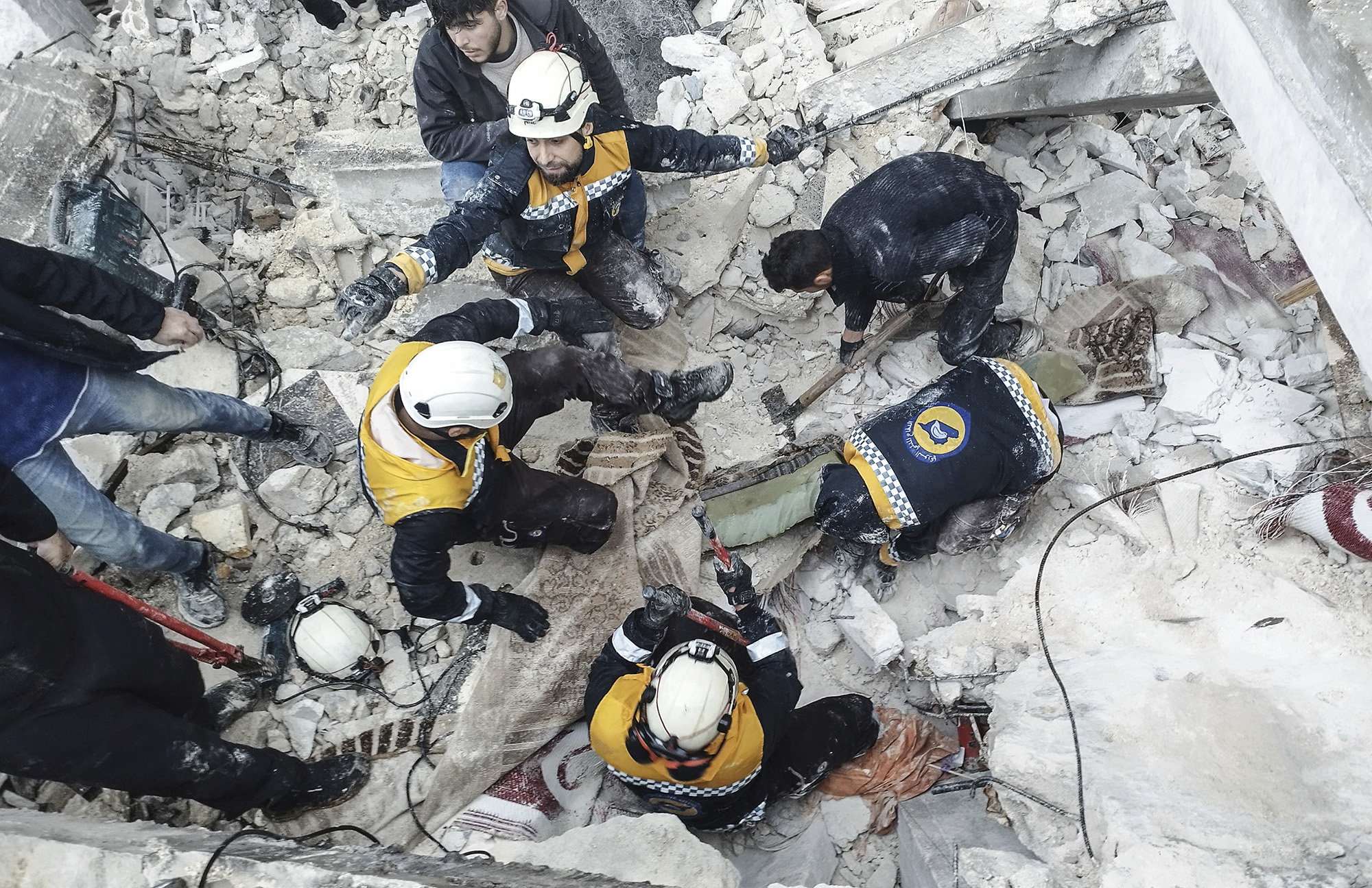
At least 1,388 people have died across Turkey and Syria, after a huge 7.8 magnitude earthquake swept across southern Turkey early Monday, injuring thousands more people in both countries.
In Syria, at least 476 people have died, including 326 mostly in the regions of Aleppo, Hama, Latakia and Tartus, according to Syrian state news agency, which also reported at least 1,042 injuries. Out of those who lost their lives, at least 139 were in Latakia, its governor told Syrian state TV.
Meanwhile, the "White Helmets" group, officially known as the Syria Civil Defense, also reported at least 150 deaths and 350 injuries in opposition-controlled areas of northwestern Syria.
In Turkey, at least 912 people have died and 5,385 people were injured, Turkey's President Recep Tayyip Erdoğan said in a televised address Monday.
A CNN eyewitness said aftershocks were still being felt hours after the earthquake. Photos have also emerged showing the disastrous aftermath of the quake, with entire buildings collapsed and cars toppled over.
Rescuers are working through the debris of fallen infrastructure to search for survivors, while the port of Iskenderun in southern Turkey and some airport runways have been damaged.
How are earthquakes measured?
From CNN's Christian Edwards
Earthquakes are measured using seismographs, which monitor the seismic waves that travel through the Earth after a quake.
Scientists used the Richter Scale for many years but now largely follow the Modified Mercalli Intensity Scale, which the US Geological Survey says is a more accurate measure of size.
The Richter scale measures magnitude, whereas the MMI scale measures intensity.
Here are the magnitude classes, according to the California Earthquake Authority:
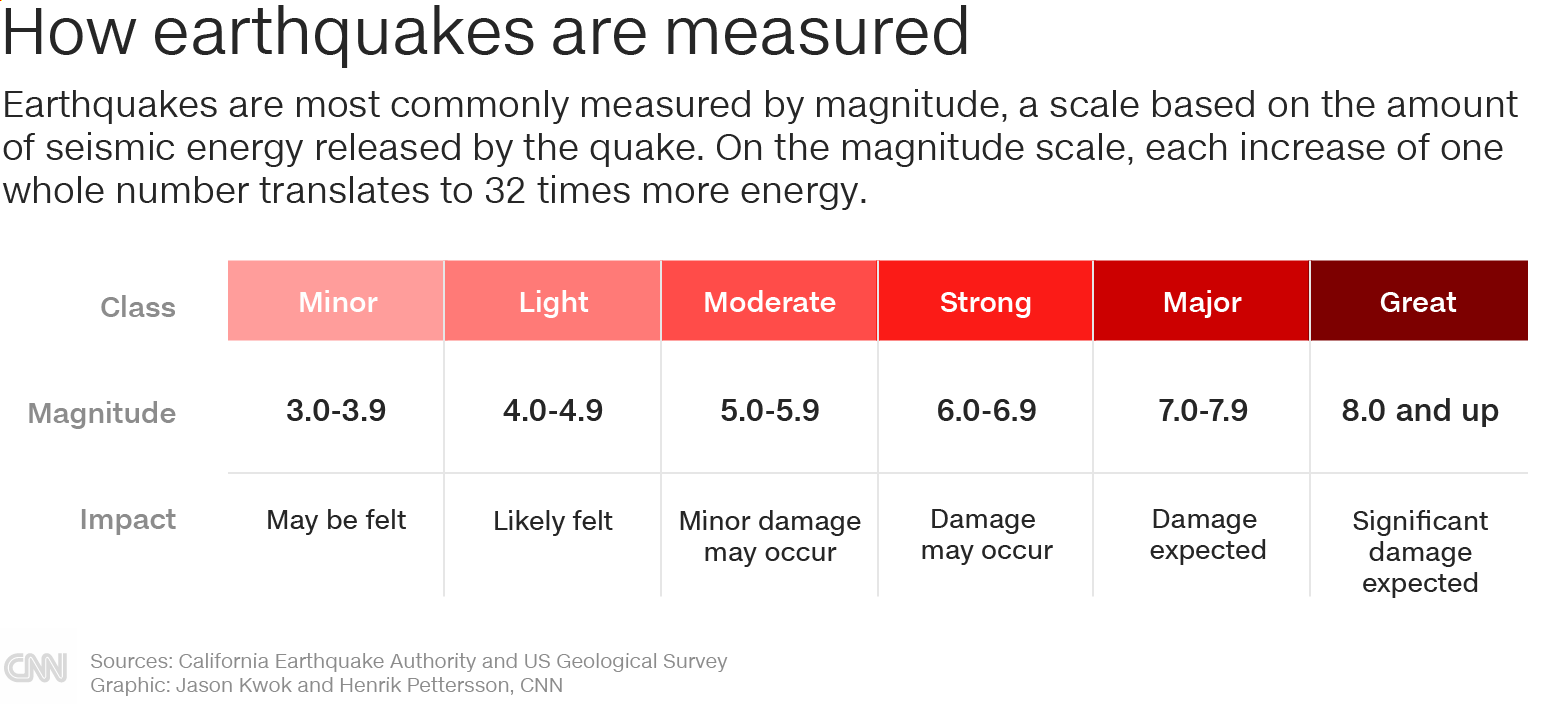
Magnitude and intensity conceptualize earthquakes differently. The California Institute of Technology explains:
To scientists, an earthquake is an event inside the earth. To the rest of us, it is an extraordinary movement of the ground. Magnitude measures the former, while intensity measures the latter.


